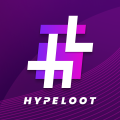Leia o aviso e o aviso de risco.
DISCLAIMER & amp; AVISO DE RISCO
Esta oferta é baseada em informações fornecidas exclusivamente pelo oferente e outras informações publicamente disponíveis. O evento de troca ou troca de token é inteiramente independente do ICOholder e o ICOholder não tem envolvimento nele (incluindo qualquer suporte técnico ou promoção). As vendas de token listadas de pessoas com as quais o ICOholder não tem relação são mostradas apenas para ajudar os clientes a acompanhar a atividade que ocorre no setor de token global. Esta informação não se destina a conselhos sobre os quais você deve confiar. Você deve obter conselhos profissionais ou especializados ou realizar sua própria diligência antes de tomar, ou se abster de, qualquer ação com base no conteúdo em nosso site. Quaisquer termos e condições celebrados pelos contribuintes em relação à aquisição de Tokens estão entre eles e o emissor do Token e ICOholder não é o vendedor de tais Tokens. A ICOholder não tem responsabilidade legal por quaisquer representações feitas por terceiros em relação a qualquer venda de Token e qualquer pedido de violação de contrato também deve ser feito diretamente contra a entidade emissora Token listada aqui.
Se você tiver alguma preocupação sobre a natureza, propriedade ou legalidade desta venda de token ou as pessoas envolvidas, entre em contato com info@icoholder.com com informações detalhadas sobre suas preocupações.

























